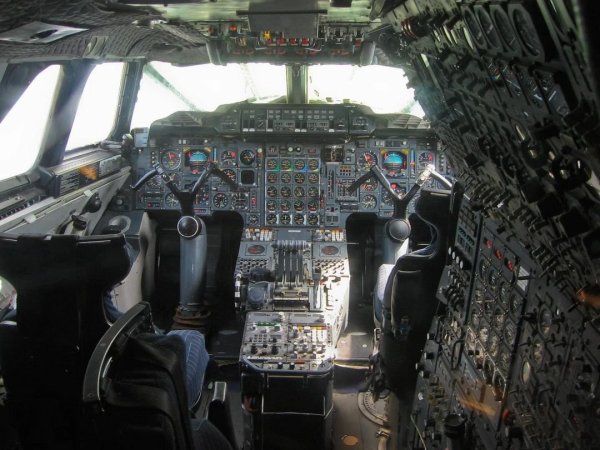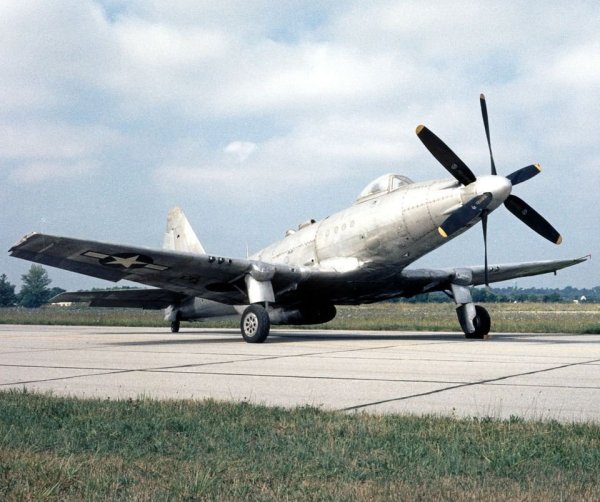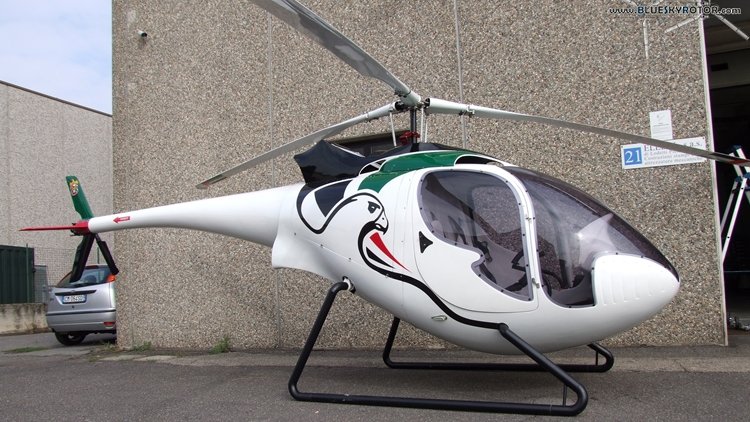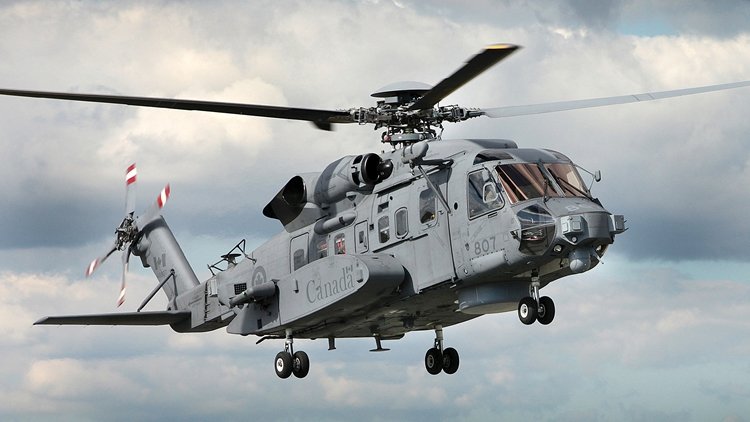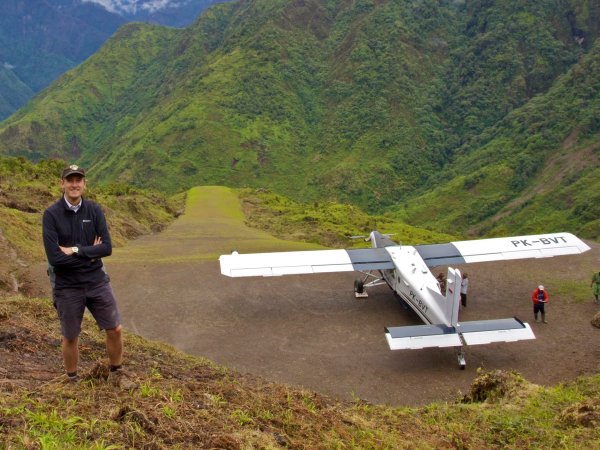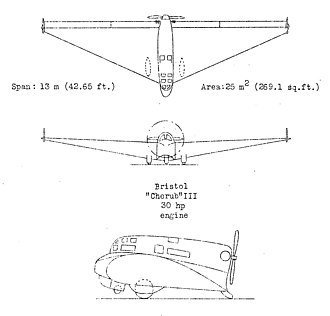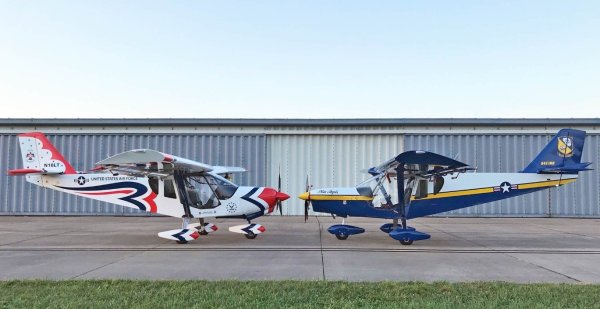-
Posts
7,694 -
Joined
-
Last visited
-
Days Won
67
Content Type
Profiles
Forums
Gallery
Downloads
Blogs
Events
Store
Aircraft
Resources
Tutorials
Articles
Classifieds
Movies
Books
Community Map
Quizzes
Videos Directory
Everything posted by red750
-
The Fisher P-75 Eagle was an American fighter aircraft designed by the Fisher Body Division of General Motors. Development started in September 1942 in response to United States Army Air Forces requirement for a fighter possessing an extremely high rate of climb, using the most powerful liquid-cooled engine then available, the Allison V-3420. The program was cancelled after only 14 prototypes and production aircraft had been completed, as it was no longer required in its original role, could not be quickly deployed, and possessed no significant advantages over aircraft already in production.
-
The SKT Skyrider 06 is a Swiss helicopter, designed and produced by SKT Swiss Kopter Technology SA of Ambrì. It was first flown in 2013 and entered series production in January 2014. The aircraft is supplied complete and ready-to-fly. The Skyrider development was started in December 2011. In June 2013 the company was formed to produce the aircraft and the first production examples were completed in January 2014. The design features a single main rotor and tail rotor, a two-seats-in side-by-side configuration enclosed cockpit with a windshield, skid landing gear and a four-cylinder, liquid-cooled, four stroke 155 hp (116 kW) Italian MW Fly B22 AeroPower piston engine. The aircraft fuselage is made from steel tubing, with a carbon fibre composite cockpit and tailboom. The aircraft's composite three-bladed main rotor has a diameter of 7.0 m (23.0 ft). The composite tail rotor has two blades and a diameter of 1.4 m (4.6 ft). The cabin width is 130 cm (51.2 in). The aircraft has a gross weight of 600 kg (1,323 lb). With full fuel of 110 litres (24 imp gal; 29 US gal) the payload for the pilot, passengers and baggage is 230 kg (507 lb). Reviewer Werner Pfaendler, describes it as an "elegant design".
-
The Sikorsky CH-148 Cyclone is a twin-engine, multi-role shipborne helicopter developed by the Sikorsky Aircraft Corporation for the Canadian Armed Forces. A military variant of the Sikorsky S-92, the CH-148 is designed for shipboard operations and replaced the CH-124 Sea King, which was in Canadian Armed Forces operation from 1963 to 2018. The Cyclone entered operational service with the Royal Canadian Air Force (RCAF) in 2018 and now conducts anti-submarine warfare (ASW), surveillance, and search and rescue missions from Royal Canadian Navy frigates. The helicopter also performs utility and transport roles in support of national and international security efforts. In 2004, Canada awarded Sikorsky Aircraft a contract for 28 CH-148s with deliveries originally planned to start in 2009. Deliveries were repeatedly delayed due to development issues and difficulty fulfilling contract requirements; the first deliveries, involving six initial helicopters (designated as Block 1), occurred during June 2015. Three years later, the Cyclone Block 2 achieved initial operating capability (IOC). The fleet was briefly grounded in early 2020 following a crash that was attributed to poor documentation and software flaws. Canada began to seek a replacement for the Sea King maritime helicopter in 1986 when it issued a solicitation for the New Shipborne Aircraft (NSA) Project. A variant of the AgustaWestland EH101 was selected and a contract was signed by the nation's governing party at the time, the Progressive Conservatives. After a change of government to the Liberal party, the EH-101 contract was cancelled. The cancellation resulted in a lengthy delay to procure a replacement aircraft. The project took on increased importance in the early 2000s and another procurement competition was initiated. On 23 November 2004, Canada's Department of National Defence announced the award of a CA$1.8 billion contract to Sikorsky to produce 28 helicopters, with deliveries scheduled to start in January 2009.[7] In addition, Sikorsky's subcontractors, General Dynamics Canada and L-3 MAS are responsible for in-service maintenance and the Maritime Helicopter Training Centre including two Operational Mission Simulators. Other elements of in-service support include the Integrated Vehicle Health Monitoring System, spares and software support. The first flight of the first production CH-148, serial number 801 (FAA registration N4901C), took place in Florida on 15 November 2008. For details of design and operational history, click here.
-
-
-
A couple of additions to the Moorabbin Aircraft Museim since my last visit. Eurocopter AS365 Dauphin Evans VP Volksplane VH-DAV Pazmany PL-4A
-
They were all gust control, light on the butter 🧈 This video has... WWW.FACEBOOK.COM They were all gust control, light on the butter 🧈 This video has cycled the internet on all platforms, from multiple users, hundreds of MILLIONS of views, but the real credit goes to @kolton_barney...
-
- 3
-

-
The Ikarus 451 is a family of research aircraft designs built in Yugoslavia in the 1950s, all sharing the same basic airframe, but differing in powerplants and cockpit arrangements. One member of the family Ikarus 451M became the first domestically-built jet aircraft to fly in Yugoslavia, on 25 October 1952. Variants 232 Pionir A small twin-engined prone-pilot research aircraft, powered by 2x 48 kW (65 hp) Walter Mikron III piston engines. (1 built) S-451 A larger, more powerful version of the Pionir, powered by 2x 120 kW (160 hp) Walter Minor 6-III piston engines and also incorporating a prone pilot cockpit. (1 built) S-451M (Mlazni – Jet) Derived directly from the S-451 airframe, the S-451M substituted Turbomeca Palas turbojet engines for the piston engines, in underslung nacelles at the same positions on the wing and conventional cockpit. S-451M Zolja (Zolja – Wasp) Flown in 1954, the S-451M Zolja featured a stretched fuselage, folding wings, and engine nacelles centred on the wing chordline. Powered by 2x 1.57 kN (353 lbf) Turbomeca Palas 056A turbojet engines, the S-451M was used to set a world speed record in its class in 1960. Ikarus J-451MM Stršljen II from 1956 (J-451MM Hornet) on display at the Museum of Aviation J-451MM Stršljen (J – Jurisnik – close support) (Stršljen – Hornet)The intended production close support version with tricycle undercarriage, Turbomeca Marbore engines and cannon armament. (1 built). S-451MM Matica (Matica – Queen bee) Two-seat trainer version, used for a world speed record in 1957. T-451MM Stršljen II A single seat aerobatic trainer, fitted with more ammunition and maximum ordnance weight was slightly increased. No member of the family was produced in any number. For more details on the design and development of the models, click here. For more photos of the various models, click here.
-
I paid a quick trip to Moorabbin today, only the second time since the start of the pandemic. I was shocked at the desecration. The first thing I noticed was that a public road now runs right through where the school I learned to fly at used to be. I learned and got my PPL at Civil Flying School, on Third Avenue. The hangar buildings still appear on the Google maps satellite view of the airport. All the aircraft parking, where I took many aircraft photos, is now a huge warehouse. Aerial view. Everything aviation to the left of this street, which now runs through to the DFO shopping centre has been replaced by warehouses. This is the street that went down to CFS. The new road runs just this side of the warehouse on the left. This warehouse is on Grange Road, where the aircraft are parked in the blue dotted lie area.
-
Virgin Australia cabin crew members are set to strike over what they say is “poverty pay” and unsafe conditions at the leading Aussie airline, some claiming they have been forced to miss breaks and take second or third jobs just to make ends meet. Transport Workers Union (TWU) members have applied to the Fair Work Commission (FWC) for a protected action ballot on Monday over the proposed industrial action. The growing frustration has been mounted by claims Virgin Australia cancelled a meeting responding to workers’ claims for better pay and conditions. But the airline has said it is attempting to bargain in “good faith” after the Cabin Crew Agreement expired less than two weeks ago. “Since that time, Virgin Australia has continued to bargain … with a clear commitment to relevant unions of our intention to reach an amicable solution on a new agreement,” a Virgin spokesman said. In a statement, the TWU said fatigue was “crippling” cabin and ground crew as well as pilots. It said a poor rostering system, “unrealistic” turnaround times and high levels of staff turnover had caused existing crew members to miss breaks on their shifts. “Successive pay freezes and cuts have caused many to seek second or third jobs to pay the bills,” the union’s statement reads. “Cabin crew are responsible for passenger safety, including locking and arming doors, customer welfare and relaying important safety information. “Fatigue can impair crew’s ability to respond to emergencies on the aircraft or in serious medical situations.” In a statement, a Virgin spokesman said the TWU’s move during negotiations “reflects the changed industrial relations landscape and is now a common part of the early process”. Another round of negotiations between the union and the Flight Attendants’ Association of Australia (FAAA) will take place on Wednesday.
-
The RRG Delta I was a German experimental tailless aircraft flown in the early 1930s first as a glider and then powered. It was one of the first delta wing aircraft. The first tailless aircraft that Alexander Lippisch saw was the Weltensegler glider, which flew briefly at the second Rhön contest in 1921. He was impressed by its initial stability, though a turn led to an uncontrolled spiral dive followed by breakup and the death of its pilot. In response he built several models and also designed the full size but disappointing Espenlaub E 2. After some time designing more conventional types and becoming Technical Head of the RRG in 1925 he returned to the tailless glider layout. in 1927. He began in 1927 with the RRG Storch, which was rather like the Espenlaub and was progressively modified. All of these aircraft had wings with sweep on both leading and trailing edges. In 1930 his first design with a straight, unswept trailing edge flew; he named it the Delta I. Its straight leading edge was swept at 20°. Following the standard practice of the time the wing had a single spar, with plywood covering ahead of it, forming a torsion resistant D-box. There were diagonal internal struts close to the wing roots and further ply skin strengthened these areas. The rest of the wing was fabric covered. The thickness was decreased markedly by the upward slope of the underside, providing dihedral. The Delta's trailing edge was equally divided between outboard ailerons and inboard elevators. As on the Storch, the wing tips were cropped and carried small, roughly triangular, ply-covered fins mounting longer, rounded rectangular, fabric covered rudders. The inner surfaces of the fins and rudders were cambered as a conventional tail rudder would be but the outer surfaces were flat. The rudders operated independently, each with its own foot pedal. To turn to port, for example, the pilot would press only the lefthand pedal to swing its rudder outwards where it acted more like an airbrake, turning the glider to port with its drag. The fuselage of the original glider was a simple, oval-section, ply-covered nacelle. Its pilot sat in an enclosed cockpit under the wing, with a transparency in the wing edge ahead and another above. A pair of smaller windows on each side provided landing views. Landings were made on a nearly nacelle-length sprung skid. There was a second cockpit at about mid-chord with another transparency above it and a pair of windows on each side. The fuselage tapered to an angled vertical knife-edge. Only one example was built.
-
The Armstrong Whitworth A.W.52 was an early flying wing aircraft designed and produced by British aircraft manufacturer Armstrong Whitworth Aircraft. The A.W.52 emerged from wartime research into the laminar flow airfoil, which indicated that, in combination with the flying wing configuration, such an aircraft could be dramatically more efficient than traditional designs. It was pursued to gather data and experience with the configuration in support of Armstrong Whitworth's ambitions to develop its proposed flying wing jet airliner. Construction of the A.W.52 commenced during the late 1940s; a total of three aircraft, the A.W.52G glider and two jet-powered aircraft, were constructed for the research programme. On 13 November 1947, the A.W.52 performed its maiden flight. On 30 May 1949, during a test flight, the first prototype encountered severe pitch oscillation that motivated its test pilot, John Oliver Lancaster, to eject from the aircraft; the incident was the first occasion of a genuine emergency ejection by a British pilot. The first prototype recovered and descended to the ground relatively undamaged. Shortly thereafter, Armstrong Whitworth decided to terminate all development work, having lost confidence in the configuration's practicality and the envisioned flying wing airliner that the A.W.52 was intended to lead to. Despite the termination, the second prototype remained flying with the Royal Aircraft Establishment until 1954.
-
Soften up and bend a little. Then you won't be so bored.



